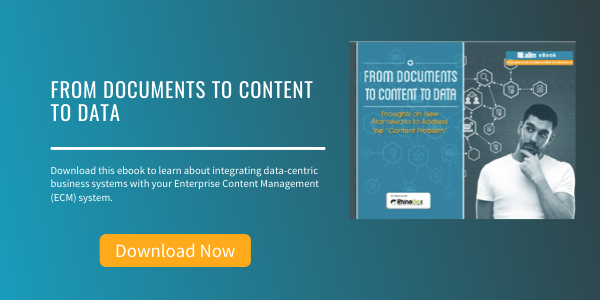
5 Myths about Electronic Document Management for Small Businesses
Awareness about electronic document management has increased over the last few years, but people are still not clear on many aspects of it. They often confuse it with file management, enterprise content management (of which document management is a subset), records management, etc. Here, we seek to bust five myths about document management, with a special focus on small businesses.
Myth # 1: I have Windows file management and so do not need a separate document management system.
Reality: Windows Explorer sure helps you manage files, but it is a basic tool, largely restricted to storing files in a hierarchy of folders. On the other hand, a good document management system will allow you to store custom metadata based on the type of document and your organization’s unique requirements. So with each scanned image of an invoice, you could choose to store the Invoice date, Invoice Amount, Company, Status (Paid/Unpaid), etc. This significantly increases the number of ways you can search for and group documents. In addition to this, document management systems will often allow you to create links between documents, annotate documents (e.g., add highlights or stamps) and share documents with controlled access (e.g., user can view but not modify). As you can see, this is a lot more than what your operating system offers.
Myth # 2: Small businesses do not need document management.
Reality: Nothing could be further from the truth. Small business owners operate with resource constraints, and therefore they often cannot employ staff to handle their routine paperwork, punch and file documents, search and retrieve them and file them back once reviewed. Already constrained employees of a small business lose further by performing the above tasks rather than the tasks they have been hired to do. Having a good document management system ensures that employees have all documents available at a click of the mouse.
Myth # 3: Document management is too complex to implement for a small business.
Reality: As a small business, you basically need to know your firm's document management requirements. Once this has been determined, there are solutions available that are very easy to implement. The best way to implement a document management solution is to roll it out in one section of your organization to start with (e.g., managing just the invoices you send and receive). Conduct a review after a month or two and see to what extent it has improved the efficiency of your staff in managing documents. Once you have seen the gains in one section, you can extend the solution to the rest of the organization. Care must be taken that the solution has the following properties: simple user interface, easy to install and configure, a comprehensive user manual and technical support available via email or phone.
Myth # 4: Document management is expensive for small businesses.
Reality: Small businesses may not need advanced, complex features that large enterprises typically require. Also, the number of users who would work on the software is likely to be smaller than for larger organizations. There are document management software solutions available that are cost-effective for small businesses. Not only this, switching to electronic document management helps reduce your consumption of paper and other office supplies, thereby reducing your recurring expenses substantially. In fact, when you calculate the Return on Investment (ROI) on a small business document management system, you would find that investing in one would actually prove to be one of the most business-profitable decisions your firm could make for its medium to long term growth.
Myth # 5: I can destroy my paper-based documents once the document management system is in place.
Reality: So, you decide to get a document management system for your small business. Congrats! But don't run for the shredder yet! You may need to retain many of those documents in paper form. Divide your paper-based documents into 3 groups:
- Those that are required to be in paper form by law; e.g., physically signed contracts
- Documents you may still need in paper form for your routine business operations
- Those documents that you will definitely not need any longer in paper form.
Of these 3 groups, you can grab only the last group of documents and head for the shredder. As the months and years go by, documents in the second and third groups too will come up for possible destruction, taking you closer to achieving a paperless office.
About John Mancini
John Mancini is the President of Content Results, LLC and the Past President of AIIM. He is a well-known author, speaker, and advisor on information management, digital transformation and intelligent automation. John is a frequent keynote speaker and author of more than 30 eBooks on a variety of topics. He can be found on Twitter, LinkedIn and Facebook as jmancini77. Recent keynote topics include: The Stairway to Digital Transformation Navigating Disruptive Waters — 4 Things You Need to Know to Build Your Digital Transformation Strategy Getting Ahead of the Digital Transformation Curve Viewing Information Management Through a New Lens Digital Disruption: 6 Strategies to Avoid Being “Blockbustered” Specialties: Keynote speaker and writer on AI, RPA, intelligent Information Management, Intelligent Automation and Digital Transformation. Consensus-building with Boards to create strategic focus, action, and accountability. Extensive public speaking and public relations work Conversant and experienced in major technology issues and trends. Expert on inbound and content marketing, particularly in an association environment and on the Hubspot platform. John is a Phi Beta Kappa graduate of the College of William and Mary, and holds an M.A. in Public Policy from the Woodrow Wilson School at Princeton University.



